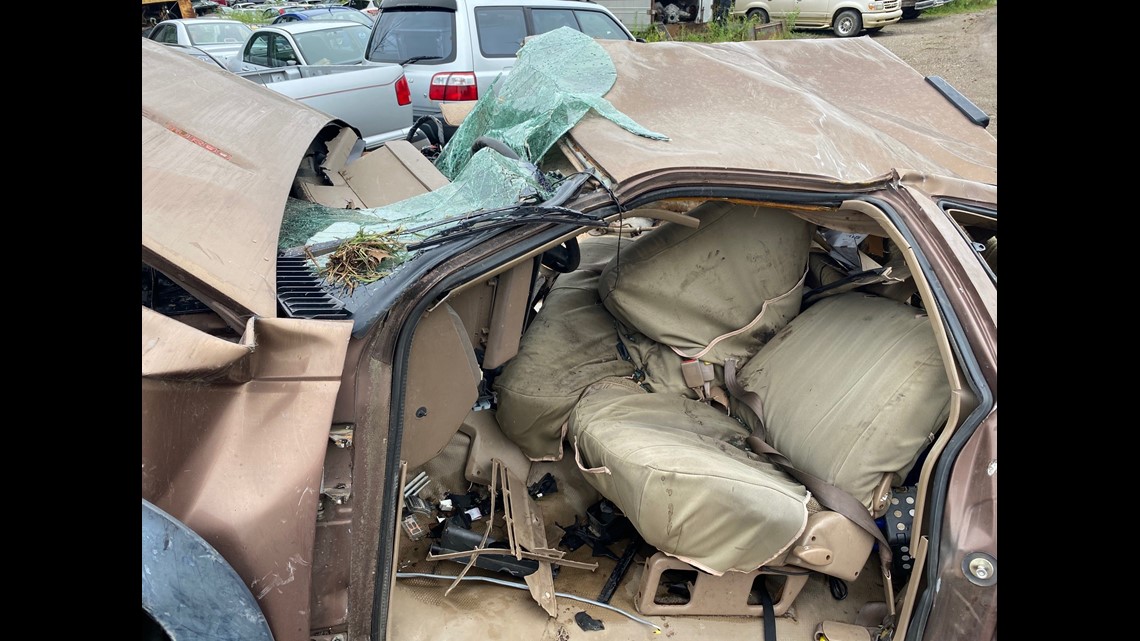FOUNTAIN COUNTY, Ind. — “It’s surreal,” said Koaldon Kerr as he walked across the rural Fountain County railroad crossing where he nearly lost his life.
“I heard the train, I looked right and that was the last thing I saw,” he said.
Kerr, then 19, had yielded at the crossing, but said he didn’t see the oncoming train that late Friday morning because of trees and brush that lined the side of the tracks.
He doesn’t remember the impact, but Michael Logan does.
“I was the first on scene,” said Logan, assistant chief for the West Point Volunteer Fire Department. “I saw a truck that was dismantled.”


“It was too much pain,” Koaldon said. “I remember every breath just hurt.”
His mother got a knock at her door a few miles away.
“I wouldn’t want any other parent to ever have to go through that,” said Teressa Kerr.
Koaldon was airlifted to an Indianapolis hospital in critical condition with a broken back, fractured shoulder blade and collapsed lung.


Amazingly, after nine days in the hospital, he was released and began his road to recovery.
First responders were grateful to hear it. But the entire experience was difficult and not just because of this accident.
“It made me think back to the loss I suffered in 2015 myself,” recalled Logan, whose wife Rachel Marie was killed at the same crossing near West 510 South and County Line Road.
“She actually reached over the back seat. Her foot slipped off the brake and never realized it,” he said.
He said he’s sharing his story to help others.
“If a little awareness saves one life, or makes one difference, it’s all worth it,” he said.
Last year, according to Operation LifeSaver, there were more than 1,800 car-train collisions at railroad crossings nationwide.
Indiana ranked in the top five, where 29 people were hurt and eight died.
“Look both ways,” said Koaldon. “From now on, I don’t even trust lights.”
Koaldon said he’d like to see more markings at that particular crossing.
He said much of the brush had been cleared following his accident.
Beyond changes to the crossing, Koaldon said he wants people to be more aware, especially at rural railroad crossings.
“Be more aware, even if you think it’s safe,” he said.
A extra few seconds that can save lives.

